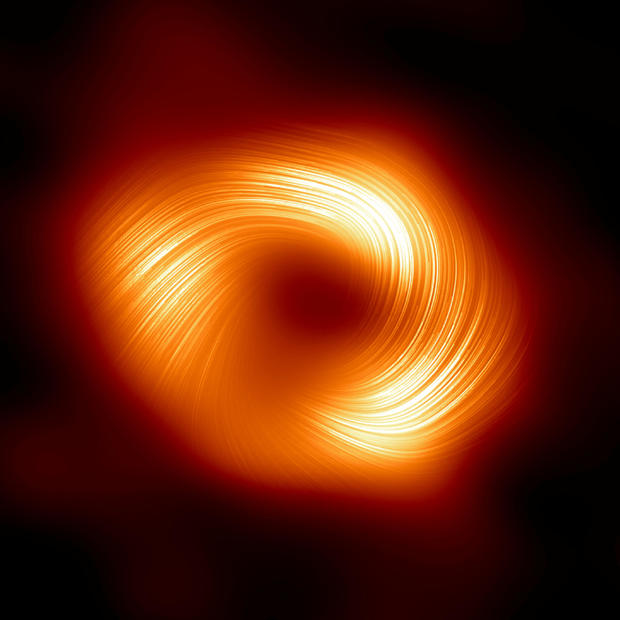New image reveals Milky Way's black hole is surrounded by powerful "twisted" magnetic fields, astronomers say
Astronomers have discovered powerful "twisted" magnetic fields spiraling around the black hole that sits at the center of the Milky Way, the European Southern Observatory said Wednesday.
A new image from the Event Horizon Telescope (EHT) for the first time showed in polarized light a ring of magnetic fields surrounding the Sagittarius A* black hole.
The fields are similar to those observed around the M87* black hole at the heart of the M87 Galaxy, which the ESO says suggests that strong magnetic fields may be common to all black holes.

"What we're seeing now is that there are strong, twisted, and organized magnetic fields near the black hole at the center of the Milky Way galaxy," said Sara Issaoun, from Harvard's Center for Astrophysics, and co-lead of the project.
Polarized light images allow the astronomers to isolate the magnetic field lines.
Supermassive black holes, which sit at the center of galaxies, have masses millions and even billions greater than the sun. They are believed to have emerged very early in the universe but their creation remains a mystery.
Nothing can escape their gravitational pull, not even light, making them impossible to observe directly.
But with M87* in 2019 and Sagittarius A* in 2022, the EHT captured the halo of light that is produced by the flow of matter and gas that black holes suck in and eject.
"By imaging polarized light from hot glowing gas near black holes, we are directly inferring the structure and strength of the magnetic fields that thread the flow of gas and matter that the black hole feeds on," said Angelo Ricarte, member of the Harvard Black Hole Initiative and a co-lead of the project.
The ESO also released a video of the new findings, which were published Wednesday in The Astrophysical Journal Letters.
Mariafelicia De Laurentis, deputy scientist at the EHT and professor at the University of Naples Federico II in Italy, said that "since both (black holes) are pointing us toward strong magnetic fields, it suggests that this may be a universal and perhaps fundamental feature of these kinds of systems."
News of the magnetic fields comes just weeks after researchers studying a galaxy through NASA's James Webb Space Telescope announced multiple discoveries, including spotting the most distant active supermassive black hole ever found.
In November, scientists discovered the oldest black hole yet, estimated to have formed 470 million years after the Big Bang -- and 10 times bigger than the black hole in our own Milky Way.
- In:
- Black Hole
Disclaimer: The copyright of this article belongs to the original author. Reposting this article is solely for the purpose of information dissemination and does not constitute any investment advice. If there is any infringement, please contact us immediately. We will make corrections or deletions as necessary. Thank you.







